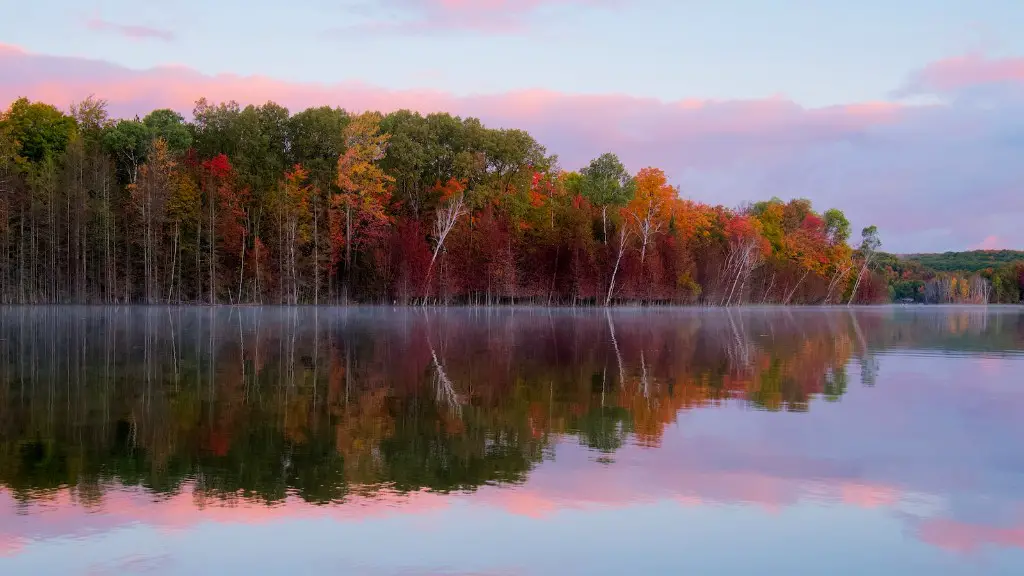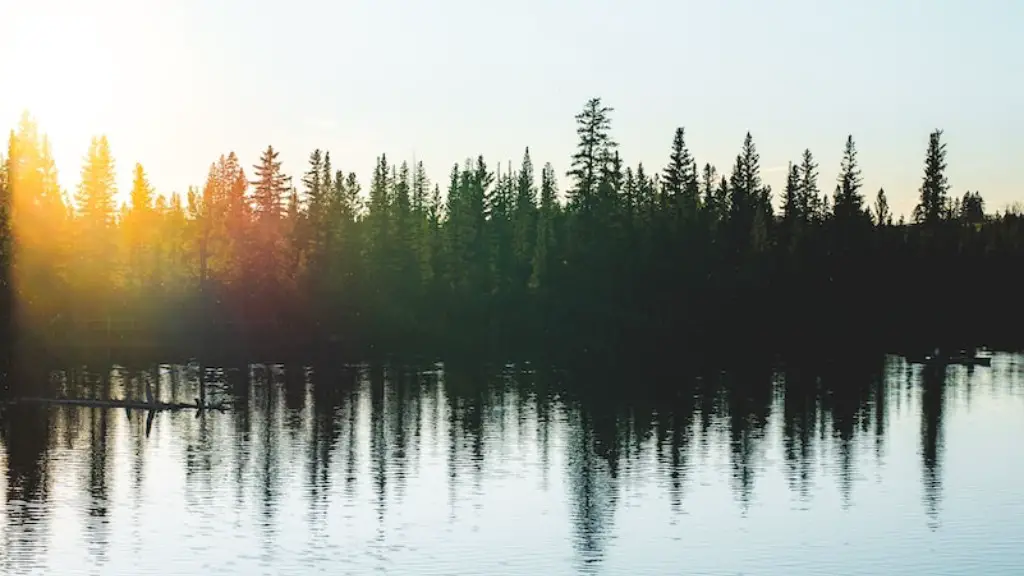Geology of Lake Michigan
Lake Michigan is one of the five Great Lakes of North America and the only one to be entirely within the United States. It is the third largest of the five great lakes and the fifth largest lake in the world by surface area. With over 1,000 miles of coastline, Lake Michigan is an important recreational and economic resource. The lake’s surface area is 22,404 square miles and its depth is approximately 279 feet, making it the third deepest of the Great Lakes. But how did it get here? Let’s look at how Lake Michigan formed.
Tectonic Events
The formation of the modern-day Lake Michigan is linked to tectonic events that occurred over two billion years ago. Prior to the formation of Lake Michigan a large body of water, known as the Wisconsin Sea, covered much of the Upper Midwest of North America. As the North American and Eurasian plates moved, the Wisconsin Sea developed fault lines, which in turn led to the formation of the Appalachian, Adirondack and Allegheny mountain ranges.
Glacial Movement
Once the tectonic events occurred, the area that would become Lake Michigan was still covered by a large body of water, which was gradually carved out by the Wisconsin glaciation—a period of glaciation that occurred in the area for around 40 thousand years. During this period, large areas of the Upper Midwest became covered with up to several hundred meters of glacial ice with glacial ice masses pushing southward from the Hudson Bay region.
Erosion
The glacial ice, with its slow yet powerful force of erosion, modified the underlying bedrock terrain and created large lakes, long narrow valleys and thousands of small ridges now known as “drumlins”. The erosive force and slow movement of the glaciers were able to grind the sedimentary rocks, creating deeply scoured basins such as those of modern day Lake Michigan.
Melting of Glaciers
About 10,000 years ago, temperatures warmed and the glaciers began to retreat, melting into streams and rivers that fed the newly formed lake. This cycle of glaciation and retreat has happened three times in what is now the Lake Michigan basin, with areas that had been scoured by glaciers slowly filling with sedimentary rocks. Over time, the main lake basin developed with marshlands, swamps and bogs at the higher elevations and beaches at the lower.
Environmental Impact
The modern day shoreline of Lake Michigan has changed dramatically since the retreat of the glaciers. Today, Lake Michigan is used as a drinking source for several cities and towns in the Upper Midwest, and its beaches are used for recreational purposes. The lake is also an important habitat for fish, birds and other wildlife, providing a home for over 80 species of fish and more than 110 species of migratory birds.
Economic Impact
In addition to its environmental benefits, Lake Michigan is also an important economic resource. The commercial fishery on the lake is responsible for providing the majority of the Great Lakes’ fishery while its recreational fishery contributes millions to the economy each year. It is also an important source of drinking water for many of the Great Lakes states, and its ports are used for shipping billions of dollars worth of products each year.
Conclusion
Lake Michigan is an incredible national and global resource, both environmentally and economically. Its formation, a result of a combination of tectonic events and glaciation, has shaped the environment, allowed for commercial and recreational fisheries, and provided habitat to thousands of species of wildlife. In addition, its ports and beach areas are important sources of economic activity, making Lake Michigan an incredible and invaluable resource.
Pollution in Lake Michigan
Lake Michigan is an important resource, but it faces a number of pollution issues. In the last century, numerous chemicals and other pollutants have been released into Lake Michigan, including sewage, agricultural runoff, industrial pollution and plastic wastes. Pollution has had a devastating effect on the lake’s water quality and animal population, with many species of fish becoming endangered or even extinct.
Cleaning Up the Lake
Fortunately, there are a number of initiatives in place to help clean up Lake Michigan. Organizations like the Alliance for the Great Lakes are actively working to reduce the amount of pollution in the lake. They are focusing on reducing the impact of non-point source pollution, creating habitat for fish and wildlife, and promoting sustainable practices in industries located near the lake.
Government Regulation of Pollutants
The government has also done its part in regulating and reducing pollutants in Lake Michigan. In 1987, the Clean Water Act was amended to further protect the lake’s water quality. This legislation increased the requirements for permits on discharges into the lake and created a number of other safeguards to reduce the impact of pollutants and to restore the lake’s ecosystem.
Education and Awareness
Finally, increasing public awareness and education is essential to the protection of Lake Michigan. Community organizations are working to spread the word on how people can reduce their impact on the lake and to promote sustainable practices. In addition, public schools are focusing on teaching students about the importance of maintaining a healthy lake and how to become stewards of their environment.
Development Near the Lake
Despite the initiatives already in place, Lake Michigan remains threatened by development. More and more people are moving to the cities located along its shoreline, leading to more pollution and habitat destruction. Organizations like the Great Lakes Commission are trying to spread awareness of these issues and to find ways to mitigate them.
Solutions to Development Issues
Organizations are also working to find solutions to the development issues arising in Lake Michigan. One major focus is educating people on the importance of conserving open spaces near the lake. In addition, there is a focus on green technologies and infrastructure solutions that can be implemented to reduce the impact of development while still meeting the needs of a growing population.
Improving Water Quality
Finally, there is a focus on improving the water quality in Lake Michigan. Organizations like the Lake Michigan Federation are working to improve water quality standards and to increase public awareness of the lake’s importance. Through initiatives like the Great Lakes Water Quality Agreement and the Great Lakes Restoration Initiative, they are working to reduce pollution levels, restore fish and wildlife habitat, and ultimately create a healthier Lake Michigan for generations to come.



